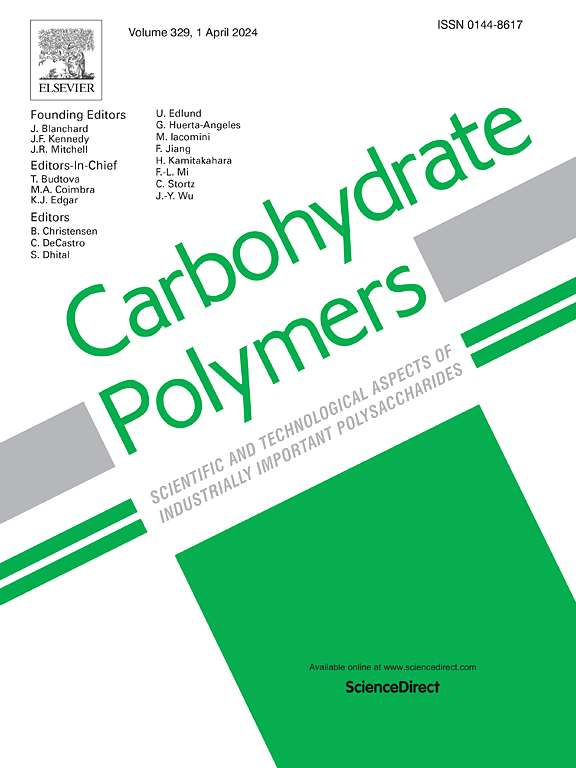Initiatorless polymerization of mechanically robust hydrogels reinforced by cellulose of wood skeleton as multifunctional sensors
IF 10.7
1区 化学
Q1 CHEMISTRY, APPLIED
引用次数: 0
Abstract
Wood-based hydrogel with a unique anisotropic structure is an attractive soft-and-wet material. However, it remains a challenge to simultaneously achieve robust, multi-functional, and multi-response integrations through a sustainable and green approach. Herein, a bioinspired, additive-free method is reported to fabricate composite hydrogels reinforced by naturally high-strength wood skeleton without using any chemical initiators and crosslinking agents. Specifically, polymers (Polyacrylamide/Polyacrylic acid) are grafted from the surfaces of the aligned cellulose of wood skeleton, forming wood-based hydrogels under UV irradiation. Afterward, Fe3+-mediated physical crosslinking is employed further to construct chemically crosslinked poly(acrylamide-co-acrylic acid) networks. Therefore, the resulting initiatorless wood-based hydrogel with a dual-crosslinked network structure exhibits an ultra-high tensile strength of 42 MPa along the longitudinal direction, representing one of the strongest hydrogels ever reported. Furthermore, the wood-based hydrogels with inherent conductive properties appealing versatile sensations on strain, temperature, and light, which could serve as human-motion monitors (detection), thermo-electrochemical sensors, underwater wearable sensors, and smart-home systems. This work offers a green and promising strategy to fabricate robust, anisotropic, flexible, and ionically conductive wood-based hydrogels for multifunctional sensors with excellent performance in complex environments.

求助全文
约1分钟内获得全文
求助全文
来源期刊

Carbohydrate Polymers
化学-高分子科学
CiteScore
22.40
自引率
8.00%
发文量
1286
审稿时长
47 days
期刊介绍:
Carbohydrate Polymers stands as a prominent journal in the glycoscience field, dedicated to exploring and harnessing the potential of polysaccharides with applications spanning bioenergy, bioplastics, biomaterials, biorefining, chemistry, drug delivery, food, health, nanotechnology, packaging, paper, pharmaceuticals, medicine, oil recovery, textiles, tissue engineering, wood, and various aspects of glycoscience.
The journal emphasizes the central role of well-characterized carbohydrate polymers, highlighting their significance as the primary focus rather than a peripheral topic. Each paper must prominently feature at least one named carbohydrate polymer, evident in both citation and title, with a commitment to innovative research that advances scientific knowledge.
文献相关原料
公司名称
产品信息
阿拉丁
Acrylic acid
阿拉丁
Acrylamide
阿拉丁
Sodium hydroxide
阿拉丁
Sodium chlorite
阿拉丁
Ethanol
阿拉丁
Iron (II) chloride
阿拉丁
Iron (III) chloride
 求助内容:
求助内容: 应助结果提醒方式:
应助结果提醒方式:


